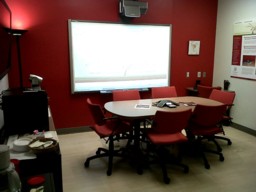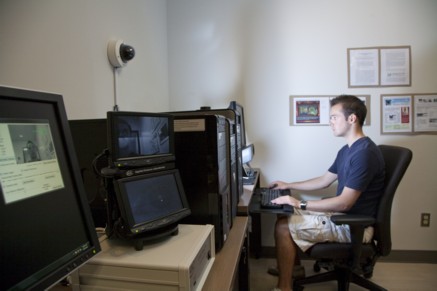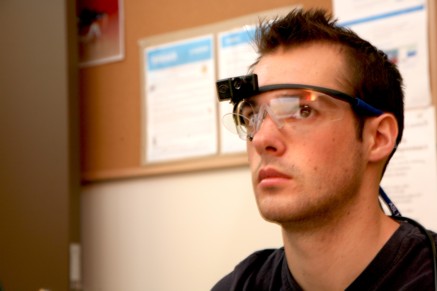Our Facilities
|
The Virtual History Lab is located in room 308 of the Lamoureux Building (LMX), the Faculty of Education, University of Ottawa, 145 Jean-Jacques Lussier, Ottawa.
People:
The VH Lab is a state-of-the-art infrastructure to study computer-user interactions designed with two main research areas: the meeting room and the observation room.
|
 |
The meeting room is a modern and hospitable space built to accomodate research meeting, discussion, and conference call. It is equiped with a computer-enabled conference table, interactive HD smartboard, and a videoconference system connected directly to the University distance education. The room offers participants the possiblity to create flexible online and onsite meeting using various technologies such as copycom, skype, and bridgit.
 |
The obsersation room was designed to study computer-user interactions in real-time learning situations. It comprises six (6) computer workstations individually connected to the Internet and a Bosch audio-video recording system controled by the tech PC.
Three (3) of these workstations are also equiped with the most advanced Applied Science Laboratory remote/desktop eye-tracking system (Eye-trac 6 premium). This eye-track system is designed to accurately record pupil diameter and eye position relative to computer screen and produce point of gaze information such as scan path. |
|
For the study of learning in naturalistic environments, such as school classrooms and museums, the VH Lab is also equipped with a portable computer lab (24 DELL laptops)
This light weight (76g) mobile eye track makes it possible to collect eye movements and point of gaze information during the performance of natural tasks like classroom group activities, reading tasks, and museum exhibit visits. |
 |